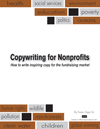That’s an incredibly simple formula for raising funds, yet it has a lot of merit.
Consider this: Your letter opens with a story that highlights a problem. Say, a veteran named Sarah who is struggling to fit back into civilian society. You talk of her challenges and what she needs to become a happy and productive civilian.
Then you tell your donor – that’s where you come in. Thanks to your gifts Sarah received … blah, blah, blah. And now she has a job; she’s happy; joined a singing group and made new friends; and so on. This is the proof that your nonprofit does what it promises.
Your prospects and donors not only understand what you do, but how you successfully help people. They clearly see the good that their money is doing. Stories that vividly illustrate – and evoke emotion – the success of your mission is proof that motivates people to donate.
You’ve presented the problem. You have shown them the proof. And now you ask for their donation. Of course you also need to explain there are more veterans like Sarah who still need help, and this is why you’re asking for the donation.
Without clearly understanding the problem and how they can help (i.e., the PROOF), donors are far less likely to send you their money. But correctly incorporate this formula into your fundraising letters and web copy and you’ll receive more donations.
This formula is a simple play on direct response marketing fundamentals. You make an appealing promise to the prospect (i.e., the donor can help someone in need; they can help solve a problem), and you prove that your nonprofit is the best group for solving the problem through the donor’s gift of money. And stories are a fantastic way to show proof.
Happy fundraising and remember . . . Problem + Proof = Donations

{ 1 trackback }
{ 0 comments… add one now }